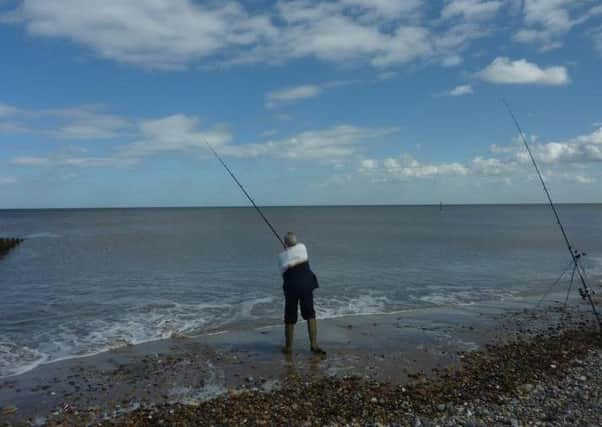Stewart Calligan's day of beach fishing at Hornsea Mere


I found families rowing around the lake, people walking their dogs and a beautifully kept mini golf course, to name but a few of the attractions.
Taking great care not to coincide with the Tour de Yorkshire which started in Beverley and then to Hornsea I later viewed this tremendously popular event outside a local Howdenshire hostelry.
Advertisement
Hide AdAdvertisement
Hide AdAfter being fed and watered at the Hornsea Mere cafe I headed to the beach with my friend Marilyn and her dog. I set up at the southern end of Hornsea beach. There was evidence of the recent storms in the high tide debris. Seaweed, shells and egg sacks etc had been torn from the seabed and were in abundance, providing an easy feast for the fish.
After my total hip replacement last February this was my first cast in anger and I confidently strode into the sea and launched a wonderful cast without any pain at all.
Needless to say I never had a bite on two rods and four hooks baited with succulent lugg worms, peeler crabs and squid. As fisherpersons know worldwide it is the anticipation of the catch that excites and the beauty of the beach. A tractor pulled out two small fishing boats as I was fishing. The sea was flat and the boats went on to their trailers without a hitch.
As I was looking through the high tide debris I came across several empty whelk egg sacks. These have the appearance of a ball of cream coloured bubble wrap. Most are of cricket ball size but occasionally they are football sized where many whelks lay their eggs together.
Advertisement
Hide AdAdvertisement
Hide AdThe common whelk (Baccinum Undatum) lay their eggs in January with one female laying several layers of eggs over several days.
The violent side of nature has not overlooked the humble whelk which displays cannibalistic tendencies as they enter their underwater world. They think nothing of devouring their siblings in their search for food.
My early recollection of whelks is the wise recommendation of my father at a Whitby Whelk stall. One whelk seemed to last most of the day when chewed slowly with one’s milk teeth. It was an obvious money saver for a frugal Yorkshireman as we passed ice cream stalls and candy floss emporiums without protest.
Not many creatures can eat a wild whelk unless caught outside its shell. Even after boiling it still takes an expert to wheedle the edible part out of the shell. Professional whelk eaters will use a special small fork or just a pin.